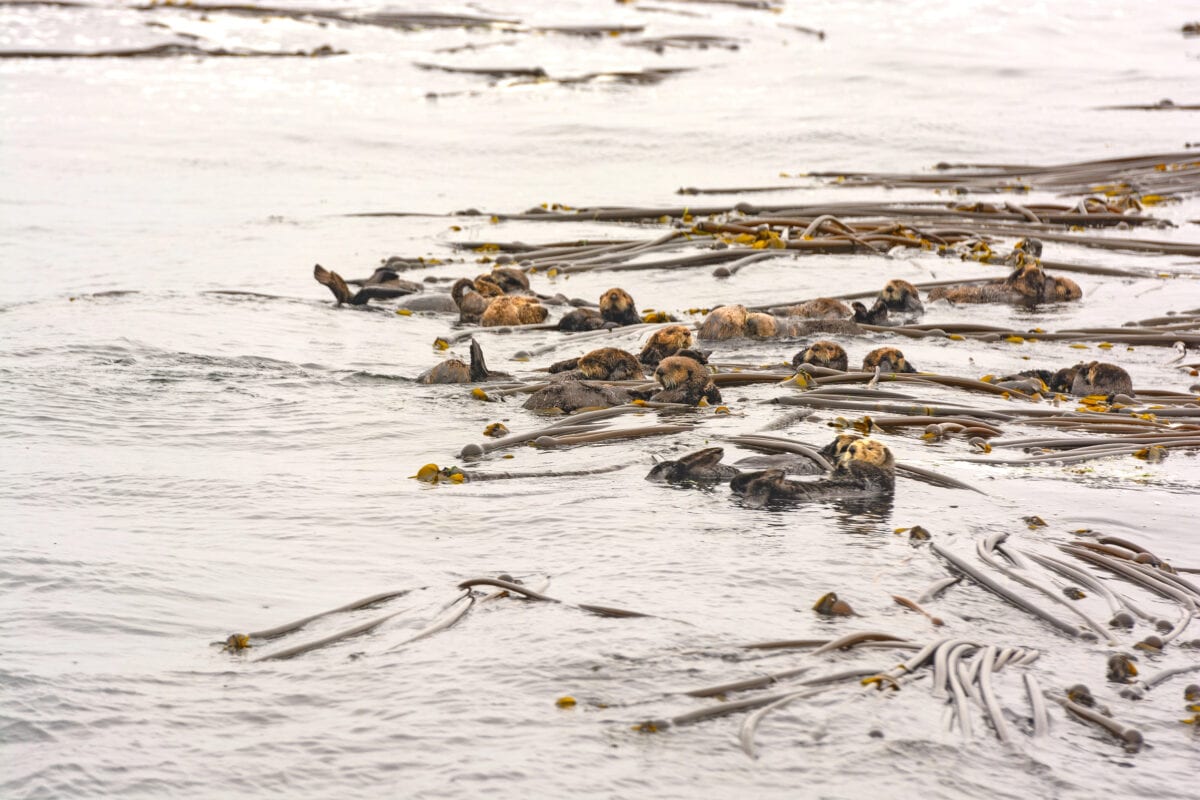Sea otters are keystone species in kelp forests. Kelp forests rely on the top-down pressure sea otters exert via predation on sea urchins. By controlling the sea urchin population, they help manage the grazing pressure on kelp, since sea urchins graze on kelp.
Cuties

Kelp forest ecosystems are able to flourish in the presence of sea otters. Sea otters also rely on kelp. One fact I find adorable is that sea otters wrap themselves in kelp to avoid floating away from each other, especially when they sleep.
The Kelp Forest

The kelp forest provides food and shelter for thousands of species – including the sea otters. Along with coral reefs, kelp forests only account for 0.1% however, they account for 0.9% of global primary productivity.
Charles Darwin

A quote from Charles Darwin in 1934 helps one understand the importance of Kelp forests – “I can only compare these great aquatic forests…with the terrestrial ones in the intertropical regions. Yet if in any country a forest was destroyed, I do not believe so nearly so many species of animals would perish as would here, from the destruction of kelp.
Importance of Kelp Forests

There are numerous other reasons why kelp forests are so important for example; coastal protection, carbon sequestration and economic impacts.
Worldwide

Kelp forests occur worldwide throughout temperate and polar coastal oceans. In North American, they occur along the west coast from Alaska to Baja California. Kelp forests are also found along the coasts of Canada, South America, Australia, New Zealand and South Africa.
Sea Otters

Sea Otters rely on Kelp Forests for protection and food. They use the kelp forests to hide from predators.
Sweet Slumber

Additionally they use the kelp to anchor themselves while they rest or sleep. They roll up in the kelp getting their bodies wrapped up like a blanket and then drift off to sleep next to one another.
The Babies

Mother sea otters also uses kelp to hold her babies while she hunts. Baby sea otters have to learn how to swim, and therefore usually just bob around on the surface waiting for its mother. To stop the baby from floating away while she hunts.
Sea Urchins

The kelp forests supports populations of sea urchins which is among sea otters favorite meals. By preying on species such as sea urchins, sea otters keep these populations under control, and helps prevent overgrazing of kelp forests.
Conservation

While we marvel at these adorable creatures we must acknowledge that they are threatened and endangered by human activities.
Protection At All Costs

The intricate relationship between sea otters, kelp forests and sea urchins would not exist if sea otters did not. The protection of these adorable creatures and their habitats is vital to ensure a balanced ecosystem.
More Animal News

- Animals That Live In Kelp Forests
- The Small Sharks of South Africa’s Underwater Kelp Forests
- Sea Otters: The Adorable Ecosystem Engineers of California’s Coastline
Join our Forum for free today!

- Sea Otters Use Kelp as Anchors While Sleeping - June 24, 2024
- This Sea Creature has a Body of Eyes - June 24, 2024
- Homeless Man Develops Life-Changing Friendship with a Husky - June 23, 2024

